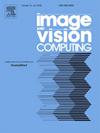基于遮挡特征补偿的双通道网络用于人体姿态估计
IF 4.2
3区 计算机科学
Q2 COMPUTER SCIENCE, ARTIFICIAL INTELLIGENCE
引用次数: 0
摘要
人体姿态估计是计算机视觉中的一项重要技术。现有方法在理想环境中表现良好,但在遮挡环境中仍有改进空间。具体原因是遮挡区域特征的模糊性使得网络对其关注不够,而且遮挡部分特征的表达能力不足,无法描述真实的关键点特征。为了解决遮挡问题,我们提出了基于遮挡特征补偿的双通道网络。双通道分别是基于卷积的遮挡区域增强通道和基于图卷积的遮挡特征补偿通道。在卷积通道中,我们提出了一种闭塞处理增强注意机制(OHE-attention),以提高对闭塞区域的注意。在图卷积通道中,我们提出了一个节点特征补偿模块,该模块消除了障碍物特征,并整合了关键点的共享属性和私有属性,从而提高了节点特征的表达能力。我们在 COCO2017 数据集、COCO-Wholebody 数据集和 CrowdPose 数据集上进行了实验,准确率分别达到 78.7%、66.4% 和 77.9%。此外,一系列消融实验和可视化演示验证了双通道网络在闭塞环境中的性能。本文章由计算机程序翻译,如有差异,请以英文原文为准。
A dual-channel network based on occlusion feature compensation for human pose estimation
Human pose estimation is an important technique in computer vision. Existing methods perform well in ideal environments, but there is room for improvement in occluded environments. The specific reasons are that the ambiguity of the features in the occlusion area makes the network pay insufficient attention to it, and the inadequate expressive ability of the features in the occlusion part cannot describe the true keypoint features. To address the occlusion issue, we propose a dual-channel network based on occlusion feature compensation. The dual channels are occlusion area enhancement channel based on convolution and occlusion feature compensation channel based on graph convolution, respectively. In the convolution channel, we propose an occlusion handling enhanced attention mechanism (OHE-attention) to improve the attention to the occlusion area. In the graph convolution channel, we propose a node feature compensation module that eliminates the obstacle features and integrates the shared and private attributes of the keypoints to improve the expressive ability of the node features. We conduct experiments on the COCO2017 dataset, COCO-Wholebody dataset, and CrowdPose dataset, achieving accuracy of 78.7%, 66.4%, and 77.9%, respectively. In addition, a series of ablation experiments and visualization demonstrations verify the performance of the dual-channel network in occluded environments.
求助全文
通过发布文献求助,成功后即可免费获取论文全文。
去求助
来源期刊

Image and Vision Computing
工程技术-工程:电子与电气
CiteScore
8.50
自引率
8.50%
发文量
143
审稿时长
7.8 months
期刊介绍:
Image and Vision Computing has as a primary aim the provision of an effective medium of interchange for the results of high quality theoretical and applied research fundamental to all aspects of image interpretation and computer vision. The journal publishes work that proposes new image interpretation and computer vision methodology or addresses the application of such methods to real world scenes. It seeks to strengthen a deeper understanding in the discipline by encouraging the quantitative comparison and performance evaluation of the proposed methodology. The coverage includes: image interpretation, scene modelling, object recognition and tracking, shape analysis, monitoring and surveillance, active vision and robotic systems, SLAM, biologically-inspired computer vision, motion analysis, stereo vision, document image understanding, character and handwritten text recognition, face and gesture recognition, biometrics, vision-based human-computer interaction, human activity and behavior understanding, data fusion from multiple sensor inputs, image databases.
 求助内容:
求助内容: 应助结果提醒方式:
应助结果提醒方式:


